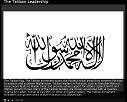|
|
|
A composite photo of Siraj Haqqani. Image courtesy of CJTF-82. |
Coalition forces struck a compound with precision-guided munitions in the early morning hours of March 12 following an imminent threat from the Haqqani Network, US military officials have told Phil Peterson, a Long War Journal correspondent currently traveling with the US military in eastern Afghainstan. The location of the compound has not yet been disclosed. Multiple intelligence sources believe senior insurgent leaders were present in the compound at the time of the strike. There is no report of civilian casualties from the site of the blast. While the strike will further erode the capabilities of the Haqqani Network, it remains unclear at this time if Siraj Haqqani, the network’s top leader, was at was at this location at the time of the strike.
Today’s airstrike comes 24 hours after Siraj Haqqani claimed responsibility for the deadly Sabari district center suicide bombing attack March 3, which killed two ISAF service members. A suicide car bomber detonated his explosive-laden vehicle — which Haqqani said was loaded with drums of gasoline, gas cylinders, mines, and other explosives — at the entrance to an Afghan government compound in Khost’s Sabari district. The force of the blast collapsed a guard tower that was occupied by US and Afghan security personnel, killing two US soldiers and injuring up to 15 others including civilian laborers.
|
|
|
Badruddin Haqqani. |
The Haqqani Network previously claimed responsibility for the combined suicide-bomb and small-arms raid against the five-star Serena Hotel in Kabul. At least eight people died in the attack including a Norwegian journalist who was traveling with the Norwegian Foreign Minister who was inside the hotel when the attack occurred.
Siraj Haqqani is the son of the legendary mujahideen commander, Jalaluddin Haqqani, who fought a vicious campaign against the Soviets and Communist Afghan forces in eastern Afghanistan during the 1980s. Jalaluddin later aligned himself with the Taliban movement in 1996 and became an important insurgent commander in 2003. Rumors of his death have persisted since last June. His sons Siraj, Naisruddin, and Badruddin help lead the vast Haqqani Network of insurgents, including Taliban fighters and foreign fighters associated with al Qaeda. Their main base of operations is headquartered in North Waziristan where support for their terrorist enterprise is well-established.
|
Multimedia presentation of the senior Taliban commanders in Pakistan and Afghanistan. Click to view. |
The Haqqani Network has claimed responsibility for a long list of attacks in Paktia, Paktika, Khost, Logar, and Nangarhar provinces over the last few years. The US military listed Siraj Haqqani and several of his subcommanders on a 12-Most Wanted poster last October. There is currently a $200,000 bounty for information leading to Siraj’s arrest. In January, Darim Sedgai, a “powerful Haqqani Network commander” with a $20,000 bounty on his head, was ambushed and killed by unknown gunmen in western Pakistan. Sedgai is the third senior member of the Haqqani Network killed since October.
Mullah Signee, Siraj Haqqani’s deputy, was killed in an unspecified raid on Dec. 11. Mullah Manan, another senior member of the Haqqani Network, was killed in early November. Manan was killed while infiltrating the Spira district in Khost province, Afghanistan, which borders North Waziristan in Pakistan.
Phil Peterson contributed to this report from Afghanistan.











2 Comments
The Thunder Run has linked to this post in the blog post From the Front: 03/12/2008 News and Personal dispatches from the front lines.
Until the camps in the tribal areas are struck, raided, the people who operate them killed or captured, there will be no real security in a-stan. Keep hitting them, keep them running.